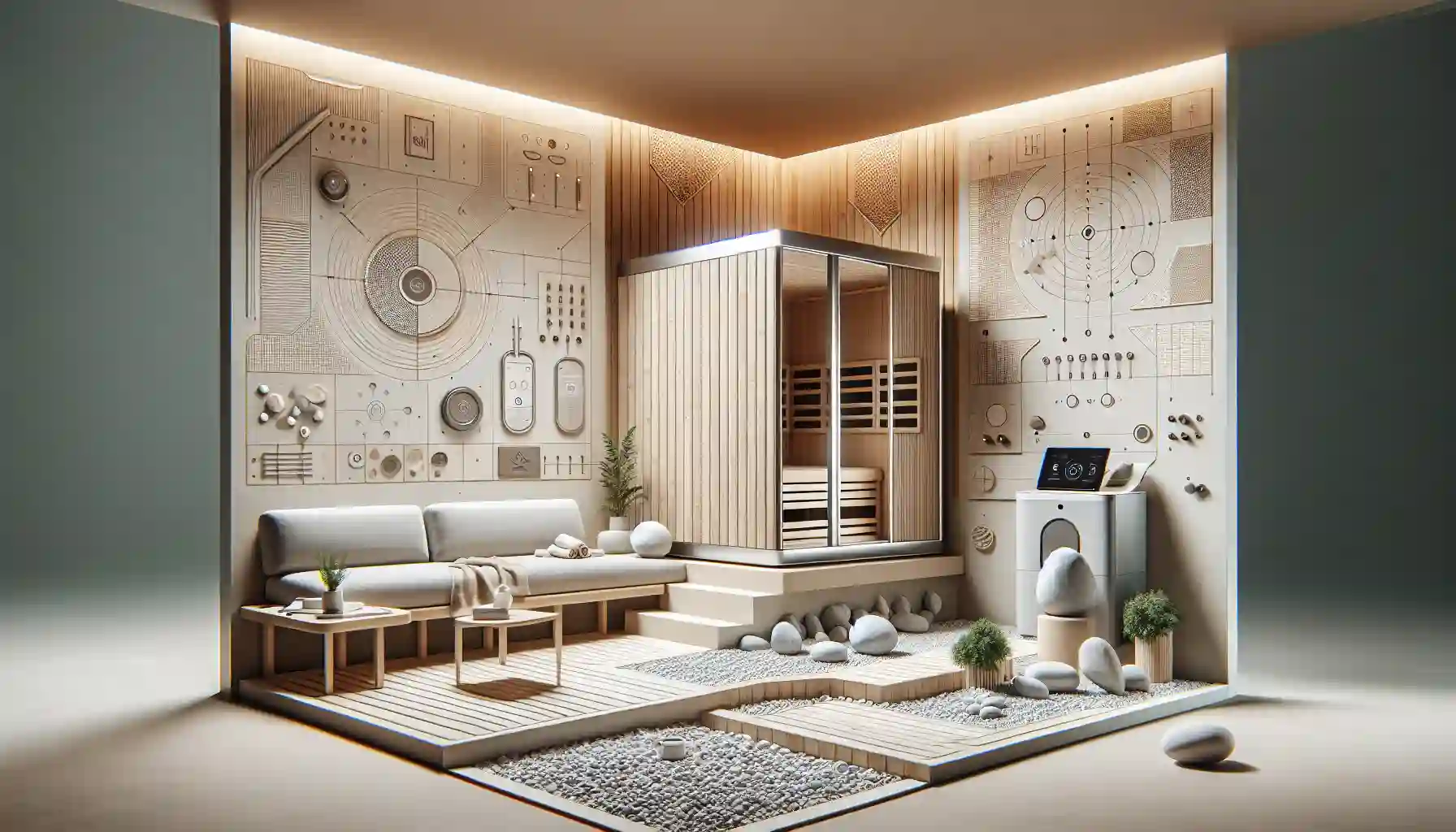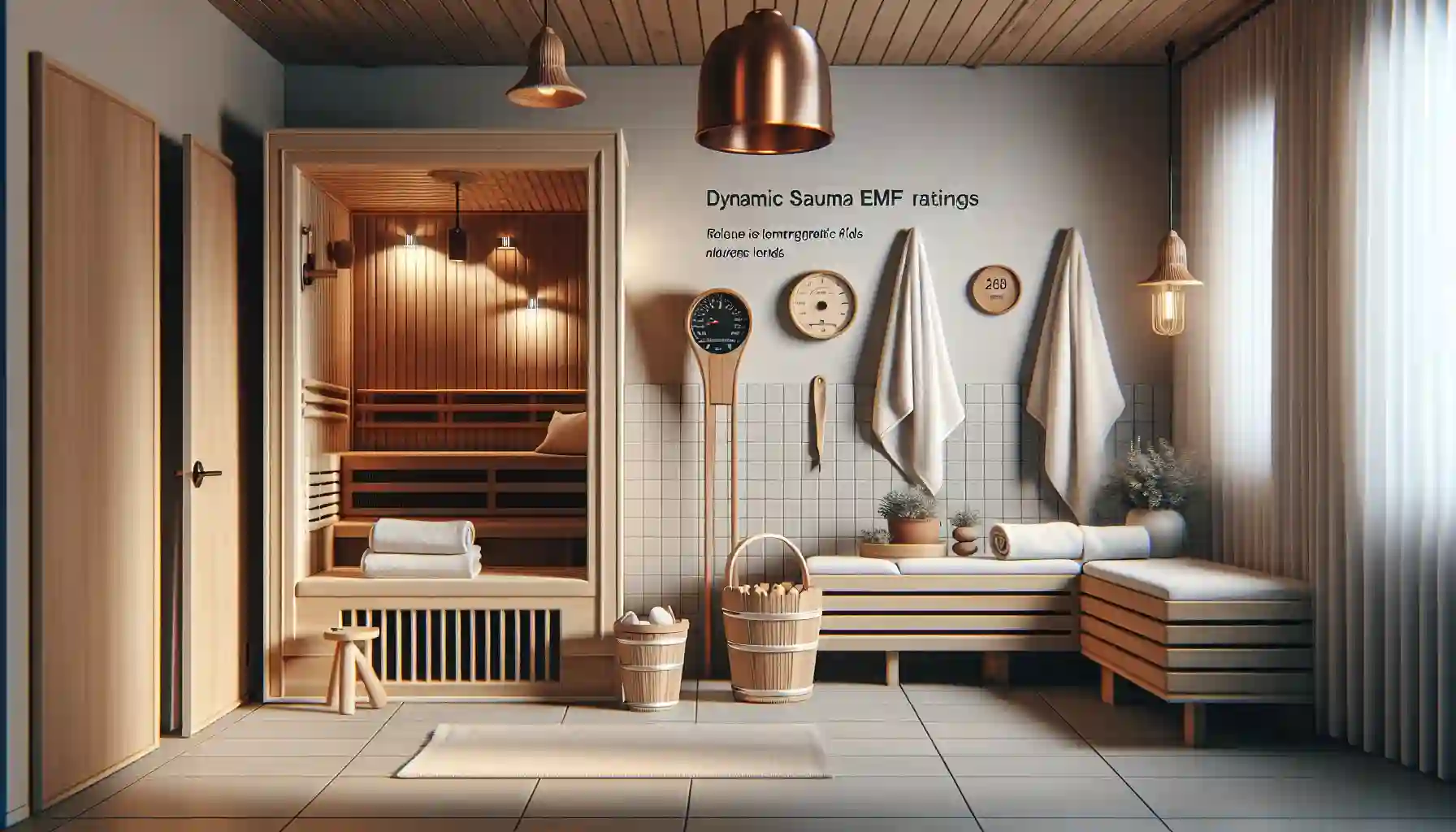Stepping into a sauna is more than just getting warm; it's a ritual. The enveloping heat melts away stress, soothes sore muscles, and offers a quiet escape. But what creates that perfect, blissful heat? The answer lies in the heart of the sauna: its heater. Choosing the right one is the single most important decision you'll make in designing your personal sanctuary. It defines everything from the heat-up time to the very character of the air you breathe.
Think of it like choosing an engine for a car. You need the right power and performance to match your needs. Whether you crave the crackle of a real fire, the convenience of a switch, or the deep-penetrating warmth of light waves, there’s a heating option for you. This guide will walk you through everything you need to know, from the classic wood-burning stoves to modern infrared panels, helping you tailor your perfect sauna experience.
How Sauna Heat Works: The Basics
Before we dive into specific heaters, let's cover a few key variables that will shape your sauna sessions. Understanding these will help you compare options more effectively.
Temperature Range: traditional saunas typically operate between 150°F and 195°F (65°C to 90°C), while infrared saunas run cooler, usually from 120°F to 150°F (49°C to 65°C).
Humidity: This is the amount of moisture in the air. A traditional Finnish sauna allows you to pour water over hot stones (creating löyly) for bursts of steam, while infrared saunas are almost entirely dry.
Airflow and Ventilation: Proper ventilation is crucial for a comfortable and safe experience. It ensures a fresh supply of oxygen and prevents the air from feeling stuffy and stale.
Heat-Up Time: This can range from 15 minutes for some infrared models to over an hour for a traditional wood-burning sauna.
Running Costs: This depends on energy efficiency, your local utility rates (for electric) or the cost of firewood, and how often you use your sauna.
Maintenance: Every heater requires some upkeep, from cleaning stones to checking electrical connections or sweeping a chimney.
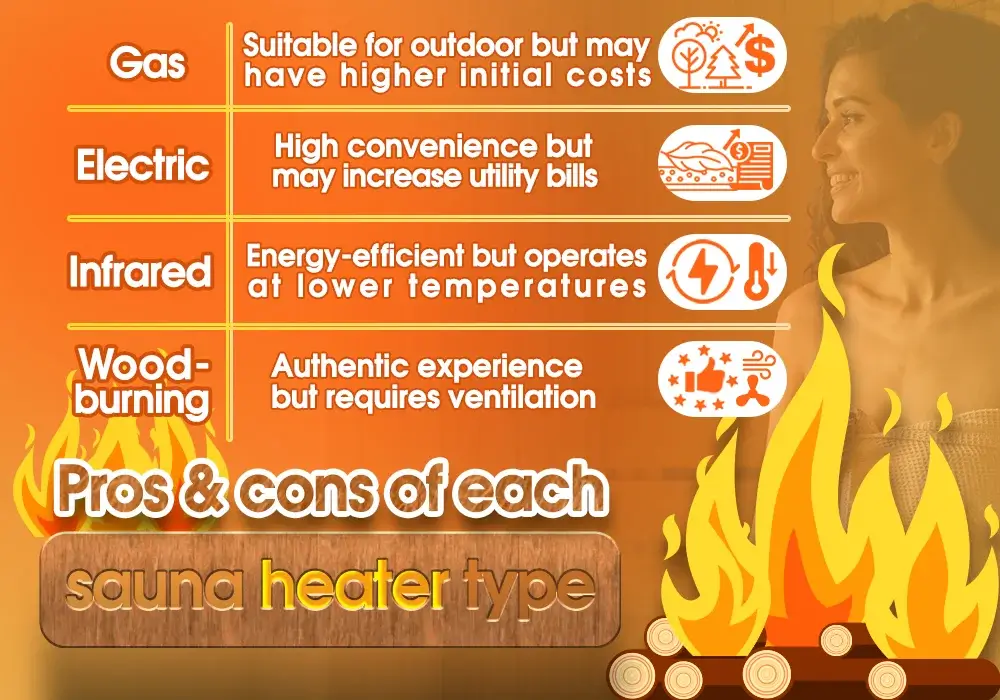
Wood-Burning Sauna Heaters: The Authentic Ritual
For purists, nothing compares to a wood-burning sauna. This is the original, time-honored method. The stove heats the room and a compartment of sauna stones. The gentle, radiant heat, the soft crackle of the fire, and the rich, smoky aroma create a deeply meditative and rustic experience.
Pros and Cons
Pros: Unmatched authentic atmosphere, operates off-grid, provides a soft and pleasant heat.
Cons: Longest heat-up time (45-60+ minutes), requires constant fire management, and produces ash that needs regular cleaning.
Best Fit
A wood-burning heater is perfect for those who view the sauna experience as a ritual, not a race. It’s ideal for cabins, rural homes, or anyone with access to firewood who wants a truly traditional experience.
Installation and Safety
Installation is more complex than with other types. It requires a proper chimney that meets all local fire codes, with safe clearances from combustible materials. Proper ventilation is non-negotiable to manage smoke and ensure a fresh air supply.
Electric Sauna Heaters: The Modern Standard
Electric heaters are the most common choice for modern home saunas, offering a fantastic balance of convenience and performance. These units use heating elements to warm a large basket of sauna rocks. When the rocks are hot, they radiate heat throughout the room. You can also ladle water over them to generate steam, just like in a wood-fired sauna.
Pros and Cons
Pros: Easy to operate (often with a simple dial or digital panel), fast heat-up times (typically 20-40 minutes), and precise temperature control.
Cons: Reliant on electricity, which can increase utility bills, and requires professional installation by a certified electrician.
Best Fit
The electric sauna is for the person who values convenience and consistency. It’s perfect for indoor home saunas, basements, or fitness centers where simplicity and ease of use are priorities.
Energy and Maintenance
Modern electric heaters are quite energy-efficient. Maintenance is minimal; it mainly involves checking the sauna stones every year or so and replacing them when they start to crumble (usually every 3-5 years).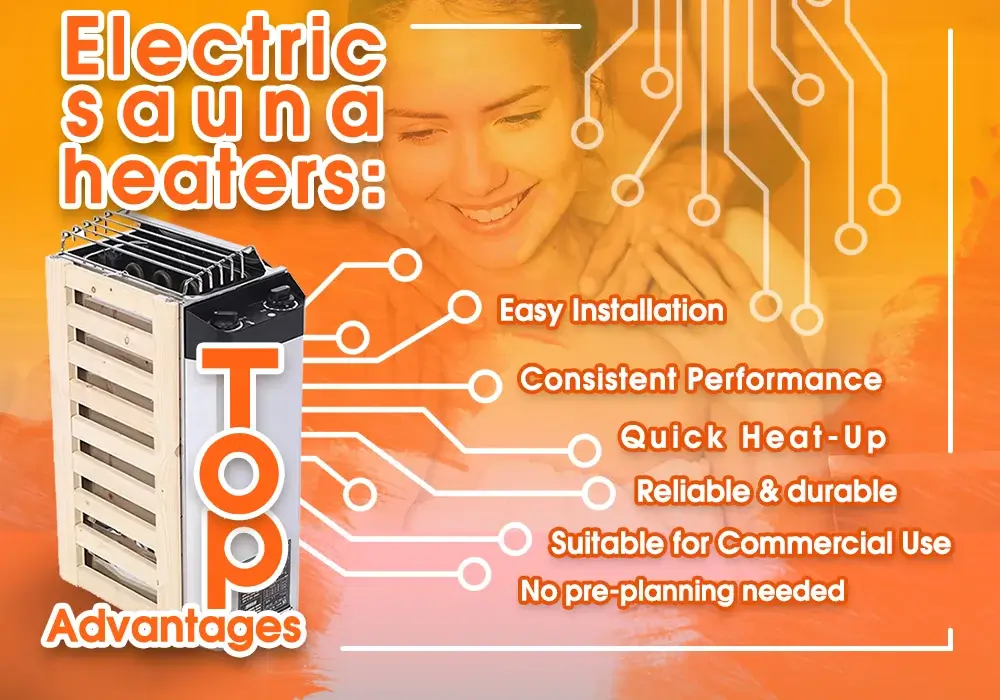
Infrared Saunas: The Gentle Warmth
Infrared saunas don't heat the air around you. Instead, they use infrared emitters (panels or lamps) to heat your body directly. The warmth penetrates more deeply into your skin and tissues at a much lower air temperature, making it a great option for those who find the intense heat of a traditional sauna overwhelming.
Far-Infrared vs. Near-Infrared
Far-Infrared: This is the most common type. The long waves are excellent for creating a gentle, full-body warmth that promotes sweating and relaxation.
Near-Infrared: These shorter waves are said to penetrate deeper, promoting tissue recovery and cellular health. Some saunas offer "full-spectrum" heaters that combine near, mid, and far-infrared for a broader range of effects.
Pros and Cons
Pros: Lower operating temperature, very fast heat-up times (10-20 minutes), energy-efficient, and great for small spaces.
Cons: Does not produce steam (it's a dry heat), and some people miss the intense, enveloping heat of a traditional sauna.
Best Fit
Infrared is excellent for those focused on therapeutic benefits like muscle pain relief or detoxification. It’s also the go-to for apartments, condos, or anyone who needs a quick, effective heat session without the high temperatures.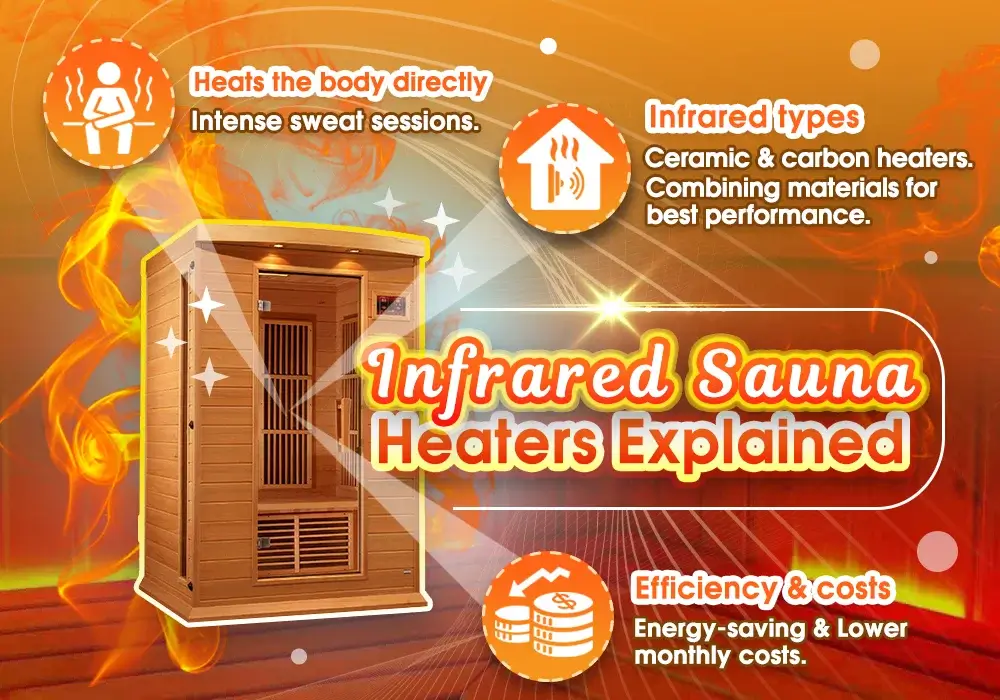
Hybrid Saunas: The Best of Both Worlds
Can't decide between traditional and infrared? You don't have to. A hybrid or combination sauna includes both an electric heater with rocks and infrared panels. This gives you ultimate flexibility. You can enjoy a classic steamy sauna one day and a deep-penetrating infrared session the next, or even use both at the same time.
Pros and Cons
Pros: Supreme versatility, allows you to cater the experience to your mood or wellness goals, and combines different types of heat therapy.
Cons: Higher initial cost and more complex installation due to the dual systems.
Best Fit
The hybrid sauna is for the enthusiast who wants it all. If you enjoy different types of heat and want to share the sauna with family or friends who have different preferences, a hybrid model is an outstanding investment.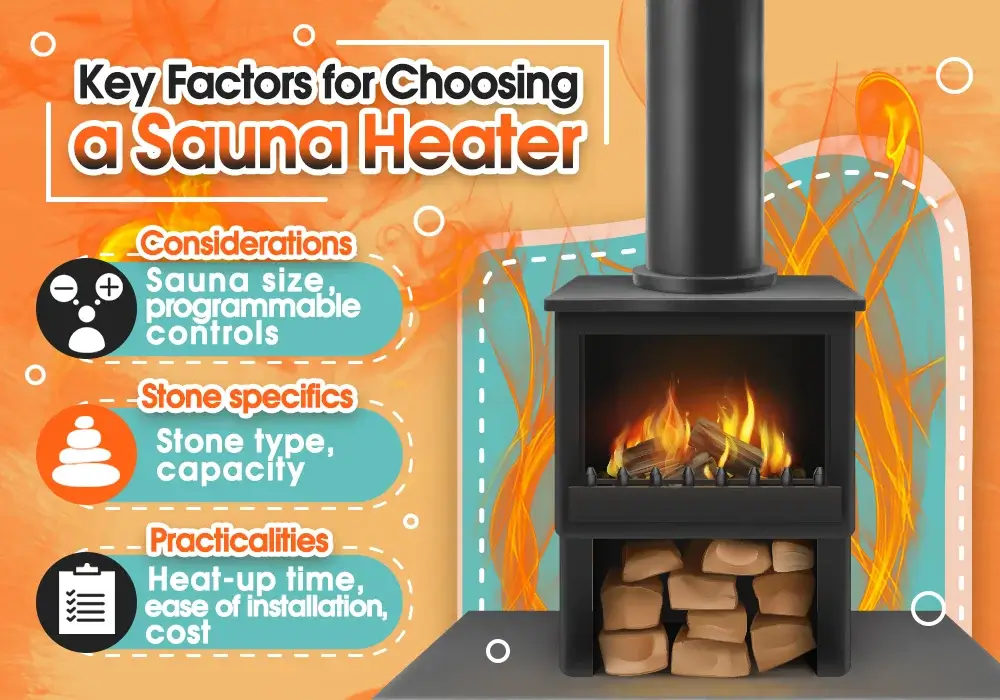
Room Size, Materials, and Insulation Matter
The best heater in the world will struggle in a poorly built room. Heat retention is key.
Your sauna should be constructed with softwood like cedar, hemlock, or aspen, which stay comfortable to the touch. Most importantly, the walls and ceiling must be properly insulated to hold the heat in, making your sauna more energy-efficient and effective.
Always choose a heater rated for the cubic footage of your room. An undersized heater will never reach the target temperature, while an oversized one can be a safety hazard and will cycle on and off inefficiently.
Sauna Safety and Best Practices
A sauna is a powerful wellness tool, but it should be used responsibly. Some research highlights the cardiovascular benefits of regular sauna use, but it's important to listen to your body.
Hydrate: Drink plenty of water before, during, and after your session.
Listen to Your Body: Start with shorter sessions (10-15 minutes) and work your way up. Never push yourself past your comfort limit.
Cool Down: A cool shower or a plunge after a sauna session is not just invigorating; it helps your body's temperature regulate.
Medical Conditions: Consult your doctor before using a sauna if you are pregnant, have low blood pressure, heart conditions, or other serious medical issues.
Making Your Choice: A Quick Guide
Feeling overwhelmed? Let’s simplify it. Ask yourself what your primary goal is.
For the Ritualist: If you love the process and want an authentic, off-grid experience, choose a wood-burning sauna.
For the Pragmatist: If you value convenience, speed, and control, an electric sauna is your best bet.
For the Wellness Seeker: If you want deep therapeutic heat at lower temperatures, go with an infrared sauna.
For the Enthusiast: If you refuse to compromise and want maximum flexibility, the hybrid sauna is the ultimate choice.
Your Pre-Purchase Checklist
Before you buy, run through this final checklist:
Room Size: Have you accurately measured the cubic feet of your sauna room?
Power Supply: Do you have the necessary electrical capacity for an electric heater (usually a dedicated 240V circuit)?
Ventilation: Have you planned for proper air intake and exhaust vents?
Safety Clearances: Does your chosen heater meet all required clearances from walls and ceilings?
Installation: Will you need a professional electrician or contractor?
Budget: Have you accounted for the cost of the heater, installation, and any needed electrical or chimney work?
Choosing the right sauna heater is about matching the technology to your lifestyle and wellness goals. By understanding the differences between these heating options, you can confidently select the heart of your sauna and look forward to countless hours of health and relaxation.


